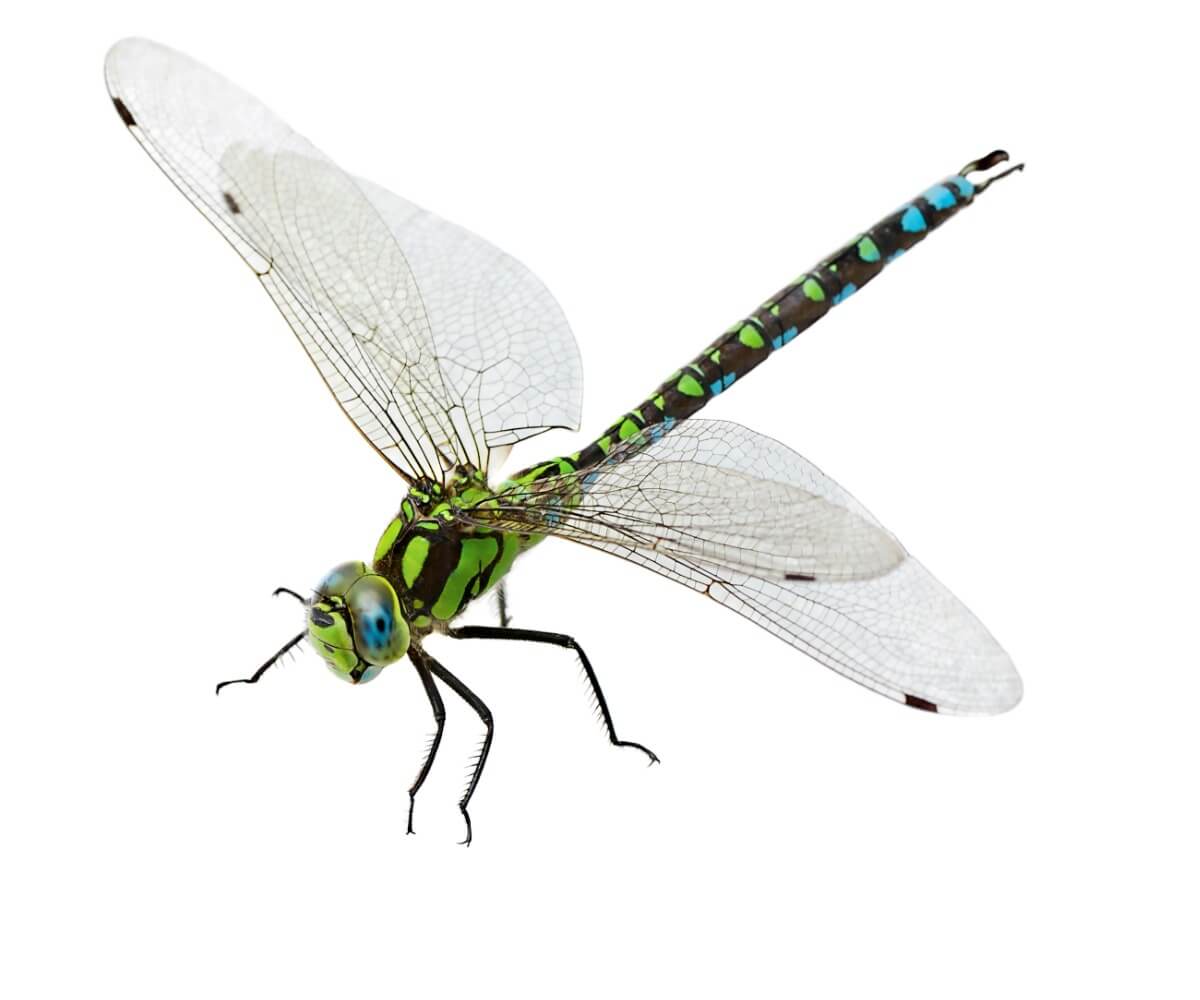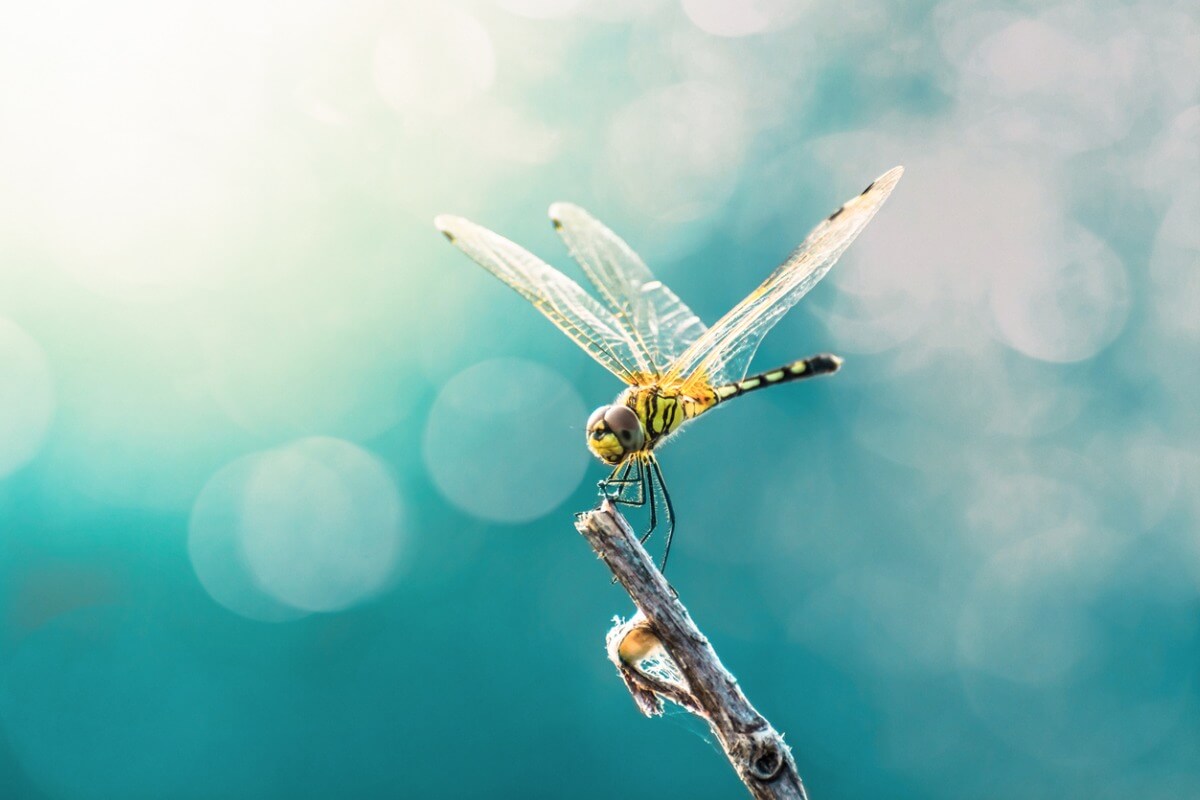Dragonflies - Another Victim of Global Warming

The rise in temperatures of the planet is already a patent problem. Therefore, it’s to be expected that, little by little, all the components of the ecosystems of our planet will be affected if this process isn’t stopped. The latest news about it deals with dragonflies and global warming, as it seems that they are also victims of this phenomenon.
At this point, you will wonder what these insects have to do with the change in temperatures. Well, it seems that it indirectly affects their reproductive capacity through the change of coloration. If you want to know why, read on.
The vision of dragonflies and their reproduction
In dragonflies, reproductive success and color vision are closely related. Their color vision is much superior to that of humans: while we have 3 types of opsins, dragonflies have 15 to 33 genes that encode them.
Opsins are light-absorbing photosensitive proteins in rods, the cells responsible for color vision.
Studying this phenomenon, an article published in the journal PNAS revealed that this great variety of opsins in dragonfly eyes probably translated into a different color vision from that of humans. In addition, these opsins change throughout their life stages, as their visual needs change.
Dragonflies are colorful animals and they also rely heavily on color vision. These striking hues are what allow males to find a mate, as females tend to choose partners with brightly colored wings.

The color of dragonflies and global warming
According to a study carried out in North America and Europe, environmental temperature is directly related to the coloration of different insects. It was recorded that, in cold areas, the tones of dragonflies and other insects tended to be darker.
The researchers also found the inverse relationship: as temperatures rise, hues become lighter. This, on the one hand, is beneficial for the survival of this insect, as being lighter helps them reflect sunlight and not overheat.
Adaptation versus genetic variability
However, in reality, this doesn’t seem to work. In areas where global warming has increased temperatures, the reproductive rate of dragonflies has decreased. This has happened progressively, as male dragonflies have lost the dark colors and complex patterns on their wings.
Females, who seek striking hues in male wings, are increasingly choosing fewer of the general population of males.
So scientists aren’t sure what to expect for dragonflies, as what seemed like an evolutionary advantage has turned out to be detrimental elsewhere. It isn’t currently known if this will keep the species alive or not, but the prognosis isn’t good.
Reproductive success of dragonflies and global warming
Michael Moore (of the Living Earth Collaborative), in conjunction with the University of Washington, examined thousands of dragonfly records from 319 species from North America. In agreement with the above, they discovered that the colder the region, the darker and more elaborate the coloring of the wings in the males of each species.
Male dragonflies photographed between 2005 and 2019 tended to have lighter wings in warmer years and more colorful in colder years.
This adaptation of dragonflies to ambient temperature is one of the most consistent found to date, as it’s a direct survival factor against global warming. However, the fact that only the least colorful dragonflies survive is a serious blow to the reproduction of the Anisoptera species.
Another problem is that females haven’t responded in the same way to this adaptation. They, unlike males, haven’t experienced this loss of coloration, or at least not as consistently. This raises questions, because, if females don’t adapt to changes in temperature, genetic variability would be seriously threatened.
Final thoughts
The climate problem that the planet is suffering is increasingly evident. It’s no longer necessary to resort to scientific and documentary studies: historical snowfalls, droughts, fires, floods, everything is becoming more and more extreme. The relationship between dragonflies and global warming is just one of the many situations to arise from this.

Pressure on large organizations, responsible for most of the planet’s degradation, remains the key to maintaining hope. Fortunately, more and more people are joining the ethical and responsible consumption, as well as the activism that strives to make the Earth habitable for us and for the animal kingdom.
All cited sources were thoroughly reviewed by our team to ensure their quality, reliability, currency, and validity. The bibliography of this article was considered reliable and of academic or scientific accuracy.
- Stelbrink, P., Pinkert, S., Brunzel, S., Kerr, J., Wheat, C. W., Brandl, R., & Zeuss, D. (2019). Colour lightness of butterfly assemblages across North America and Europe. Scientific reports, 9(1), 1-10.
- Department of Biology. (2021, 23 julio). Michael Moore. https://biology.wustl.edu/people/michael-moore
- Futahashi, R. (2015, 18 febrero). Extraordinary diversity of visual opsin genes in dragonflies. PNAS. https://www.pnas.org/content/early/2015/02/18/1424670112